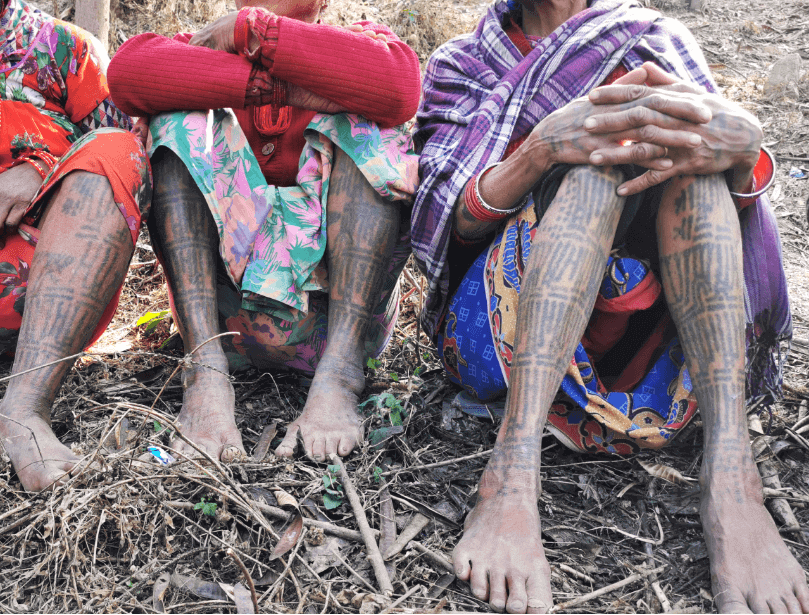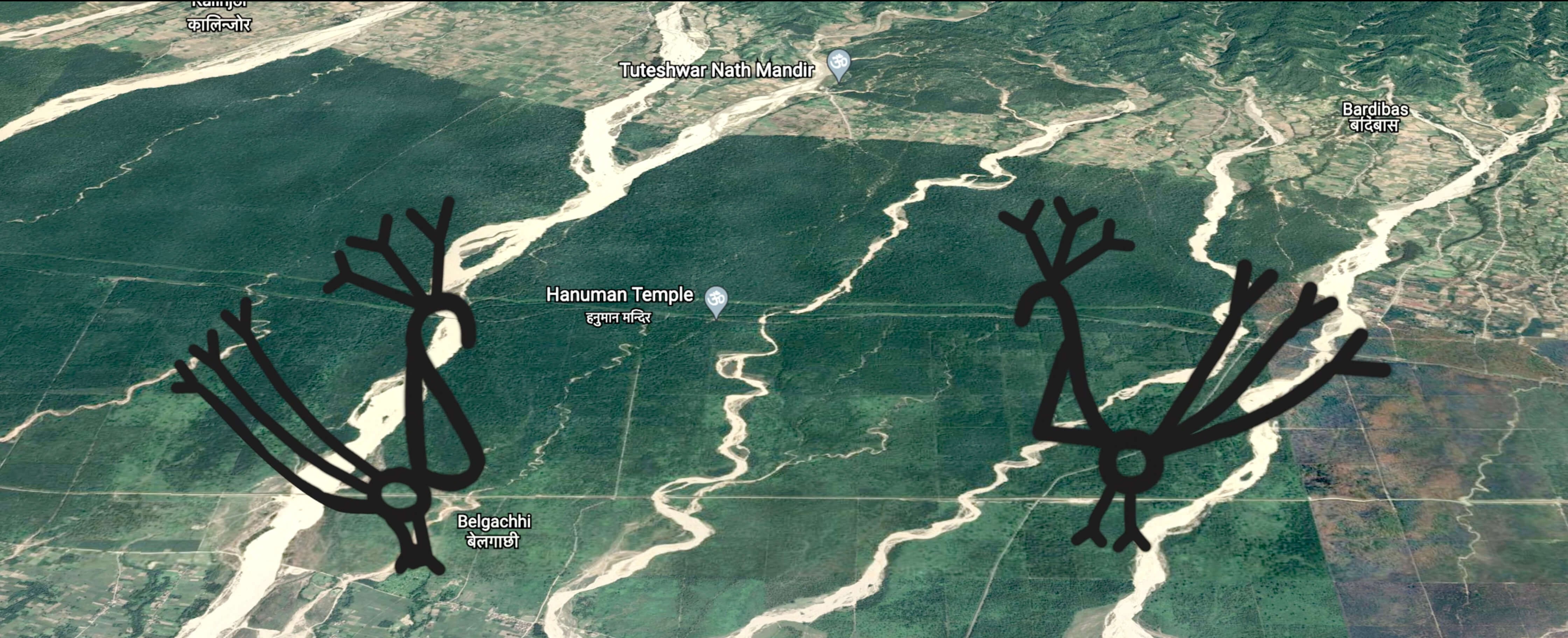ARTREE NEPAL
ANDRMILA
GAMWA THARU
Courtesy of the artists

Tikās/Godnas were once a thriving tattooing practice in Nepal’s Terai region. Now, it is only being preserved by a handful of women. State persecution and discrimination against the Tharu community disincentivized many from bearing such visibly distinct and prominent markers of their Tharu identity in public, a practice that is deeply entwined with their Indigenous history.
In the Tharu language, the expression “tik ā likhi” (to write a tik ā) captures the importance of this art form. Tik ās are simultaneously images, maps, and texts transferred intergenerationally from body to body. The exploitation of Tharu lands and communities by feudal and capitalist structures are driving forces for the loss of this tradition. The landscapes that gave shape to the rich iconography of Tharu tattooing have been rendered unrecognisable over decades of deforestation, urbanisation, and displacement. The continued presence of each tik ā thus embodies the corporeality of history, identity, and the resistance of Tharu communities across Nepal.
These images are part of an ongoing research initiative by Artree Nepal and Urmila Gamwa Tharu.
ArTree Nepal is an artist collective formed in 2013 and based in Kathmandu. Artree Nepal includes the artists Subas Tamang, Mekh Limbu, Sheelasha Rajbhandari, Hit Man Gurung, and Lavkant Chaudhary.

Location Map

Designed & Developed by: Curves n' Colors | Visual identity by: Wkshps
